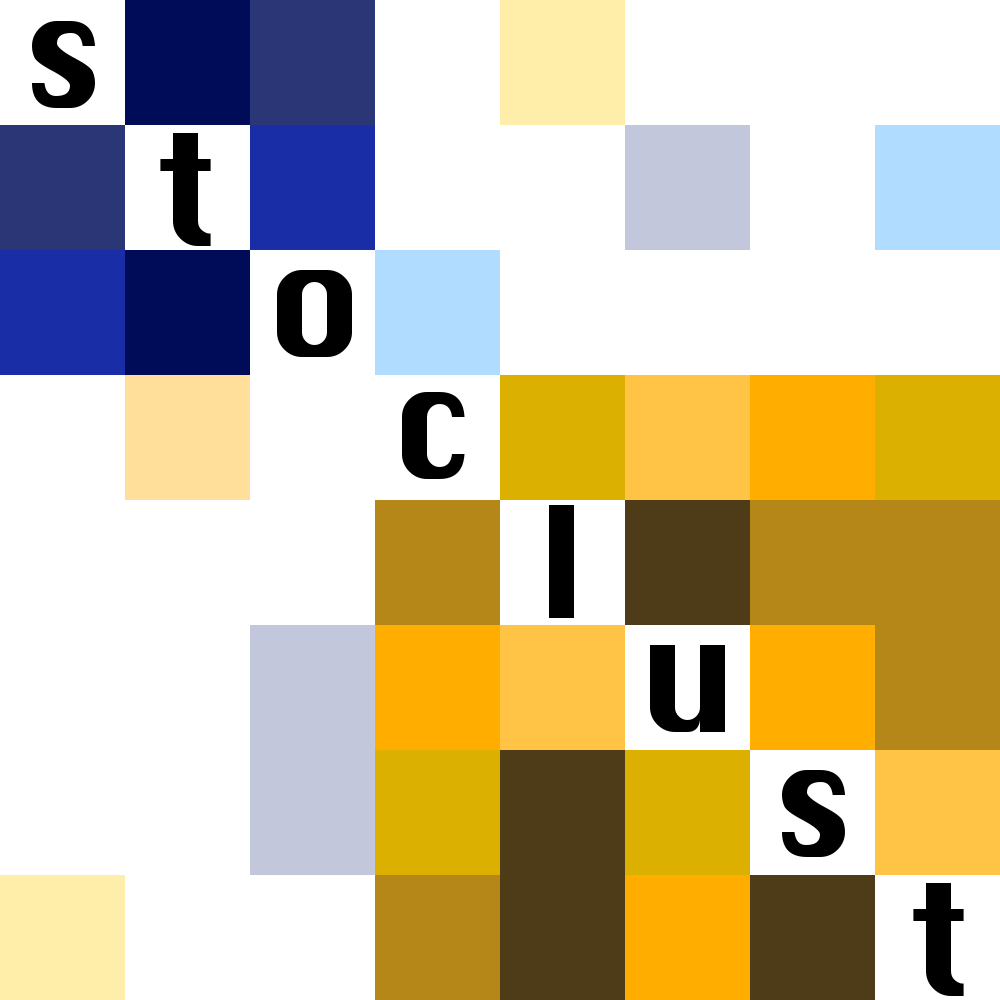stoclust

Clustering algorithms using stochastic analysis and ensemble techniques.
split_by_vals
↳ clusteringsplit_by_vals(vec, cuts=0, index = None, tol=0)
Aggregates the indices of a vector based on specified values at which to cut the sorted array. Assumes the right-continuity of the cumulative distribution function.
Given a vector \(v_i\) and a list of cuts \((c_1,\dots,c_k)\), the function will attempt to return clusters defined by:
\[C_\ell = \begin{cases} \{i : v_i \leq c_1\} & \ell=0\\ \{i : c_\ell < v_i \leq c_{\ell+1}\} & 0 < \ell < k \\ \{i : v_i > c_k \} & \ell=k \end{cases}\]If any of these clusters are empty, they will be discarded and the clusters relabeled to begin at \(0\) and end at \(N-1\) where \(N\) is the final number of clusters.
Note the asymmetry in that clusters will always contain their upper bound
but not their lower bound (this is in line with the standard
right-continuity of the cumulative distribution function).
To change the orientation of this asymmetry, the user
can pass -vec as the argument instead.
Arguments
| Arguments | Type | Description | |
|---|---|---|---|
vec |
np.ndarray |
A one-dimensional array of values. | |
cuts |
Keyword | float, list or np.ndarray |
Values which will be used to divide the vector components. |
index |
Keyword | Index |
The index which labels the indices of vec, and which will be the item set of the returned Aggregation. |
Examples
First we provide a direct example which shows the behavior as well as subtleties of the quantile function. We pass the vector \(\mathbf{v} = (0,0.1,0.2,0.3,0.4,0.5,0.6,0.7,0.8,0.9)\) and the cut-values \(\{-0.1,0,0.5,0.9,1.0\}\):
import stoclust.clustering as clust
import numpy as np
vec = np.arange(0,1,0.1)
agg = clust.split_by_vals(
vec,
cuts=[-0.1,0,0.5,0.9,1.0]
)
print(vec)
agg[0. 0.1 0.2 0.3 0.4 0.5 0.6 0.7 0.8 0.9]
Aggregation(
1:
Index([1,2,3,4,5])
0:
Index([0])
2:
Index([6,7,8,9])
)
Note that, as \(-0.1\) and \(1.0\) are outside of the range of the vector’s values, they generate no nontrivial clusters. Furthermore, \(0.9\) can only divide the components into those with values less than or equal to \(0.9\)–––which is all of them–––or those with values greater than \(0.9\)–––which is empty. So, only the cuts \(0\) and \(0.5\) are used, dividing the components into three parts: those with \(v_i\leq 0\), those with \(0 < v_i\leq 0.5\), and those with \(v_i> 0.5\).
The next example is visual. We randomly generate a vector with 50 components, its values drawn from a uniform distribution. After value clustering we plot the sorted values, colored by cluster.
vec = np.random.rand(50)
agg = sc.clustering.split_by_vals(vec,cuts=[0.2,0.5,0.9])
rank = np.empty_like(vec)
rank[np.argsort(vec)] = np.arange(len(vec))
fig = viz.scatter2D(
rank,vec,agg=agg,mode='markers',
layout=dict(
title = 'Sorted vector components (value clustering)',
xaxis = dict(
title='Sorted rank'
),
yaxis = dict(
title='Value'
),
legend = dict(
title='Cluster'
)
)
)
fig.write_html('split_by_vals.html')
fig.show()